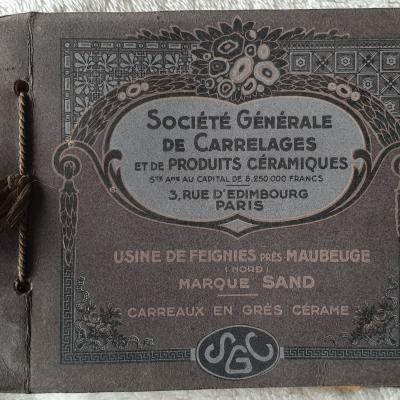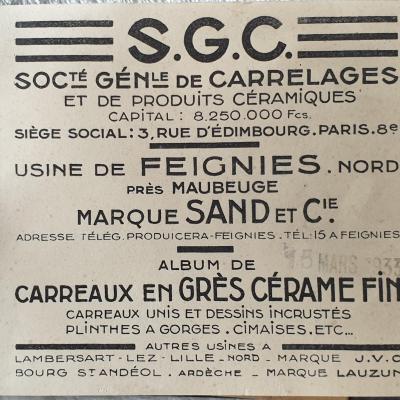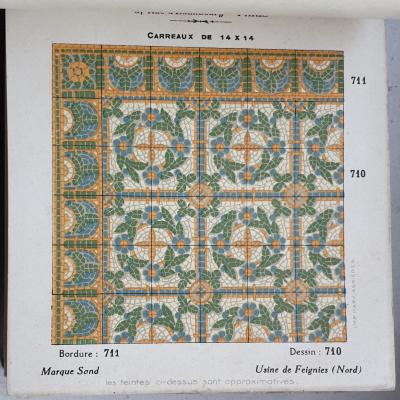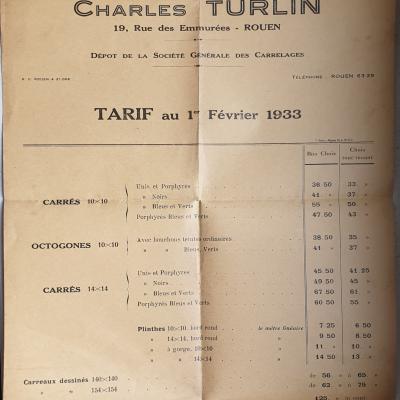20.5m2+ / 220 sq ft antique faux mosaique themed floor - 1933
A reclaimed and now fully restored antique French floor of 14cm / 5.5 inch sq, 15mm / 0.6 inch thick ceramic encaustic field and border tiles, totalling 20.5m2 / 220 sq ft.
Popular in France in the 1920's and 1930's, the design of the floor is of a 'faux-mosaique' theme whereby solid ceramic tiles created the visual impression of the floor being comprised of tens of thousands of smaller mosaic pieces. Here, in the principal field tiles, the laurel-shaped motif, opening up in a four-tile tessellation, is beautifully ornate and intricate. Framing the floor is a same-sized border tile, laid in duplicate back-to-back and bearing a scalloped motif. The palette of amber, soft greens, vibrant blue and grey piping on an off-white slip is evidenced on field and border tiles delivery harmony in design and colour.
The floor was manufactured by Societe Generale de Carrelages et produits Ceramiques, Usine de Feignies, the brand being Sand & Cie and, for provenance of this 92-year-old floor, we include in the photograph gallery scans from their original catalogue displaying the tiles, as well as a tariff page within the catalogue that dates the floor to 1933.
The floor has been restored to its original beauty, as evidenced by the high-resolution photographs of a 1.25m2 / 13.5 sq ft randomly selected section of the floor shown in the gallery; old mortar, wax and surface dirt have been removed tile by tile, and it now arrives ready to relay. The same size borders can be laid singulary or back-to-back and, being a highly fired tile, to c.1,100 degrees F, it can be laid inside or outside the home.
Tile quantities, give or take one or two:-
FIELD tiles - 840 - 16.5m2 / 177 sq. ft.
BORDER tiles - 208 plus 4 corners - 4.2m2 / 45 sq ft. or 29.8 linear metres / 98 linear ft*
* halve the length if a back to back lay is planned.
NOTE Antique tiles were most commonly made in single or two tile moulds. Before current computer automation methods their moulds were made by hand and the colour slips mixed by eye. Kiln temperatures could also be variable, as could the firing time. The result is that tiles often display subtle size and thickness variations and there can be tonal variations in colours, owing to the slip mixing and/or firing time. All of this makes these handmade tiles unique and adds to their charm. Some floors display their subtle variations in size and tones, some not, but when photographing we always take a random section of the floor so that it is representative of the whole. A tiler should always dry lay a section of the tiles to familiarise himself with them before starting to fix lay.
MAD73








